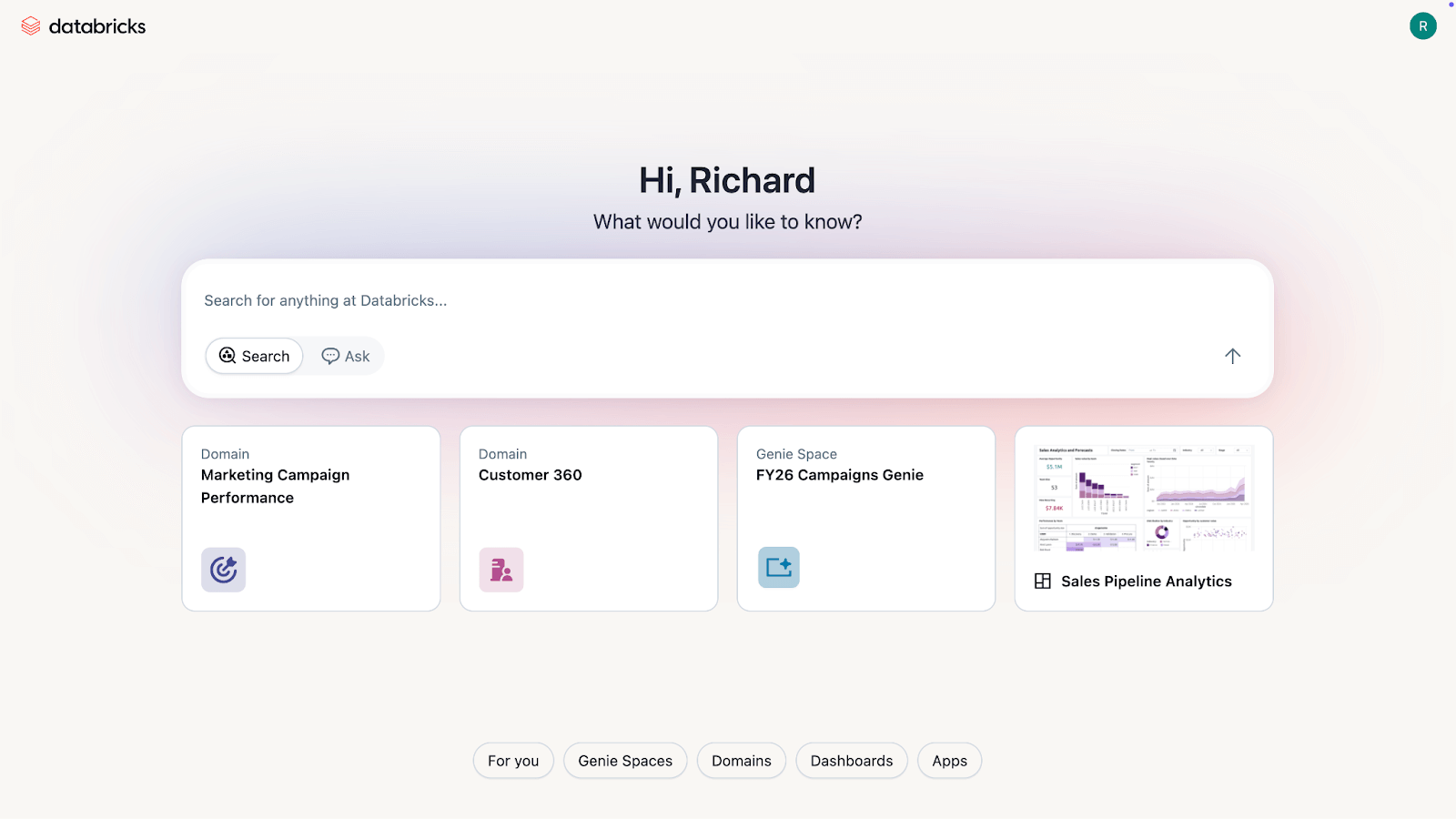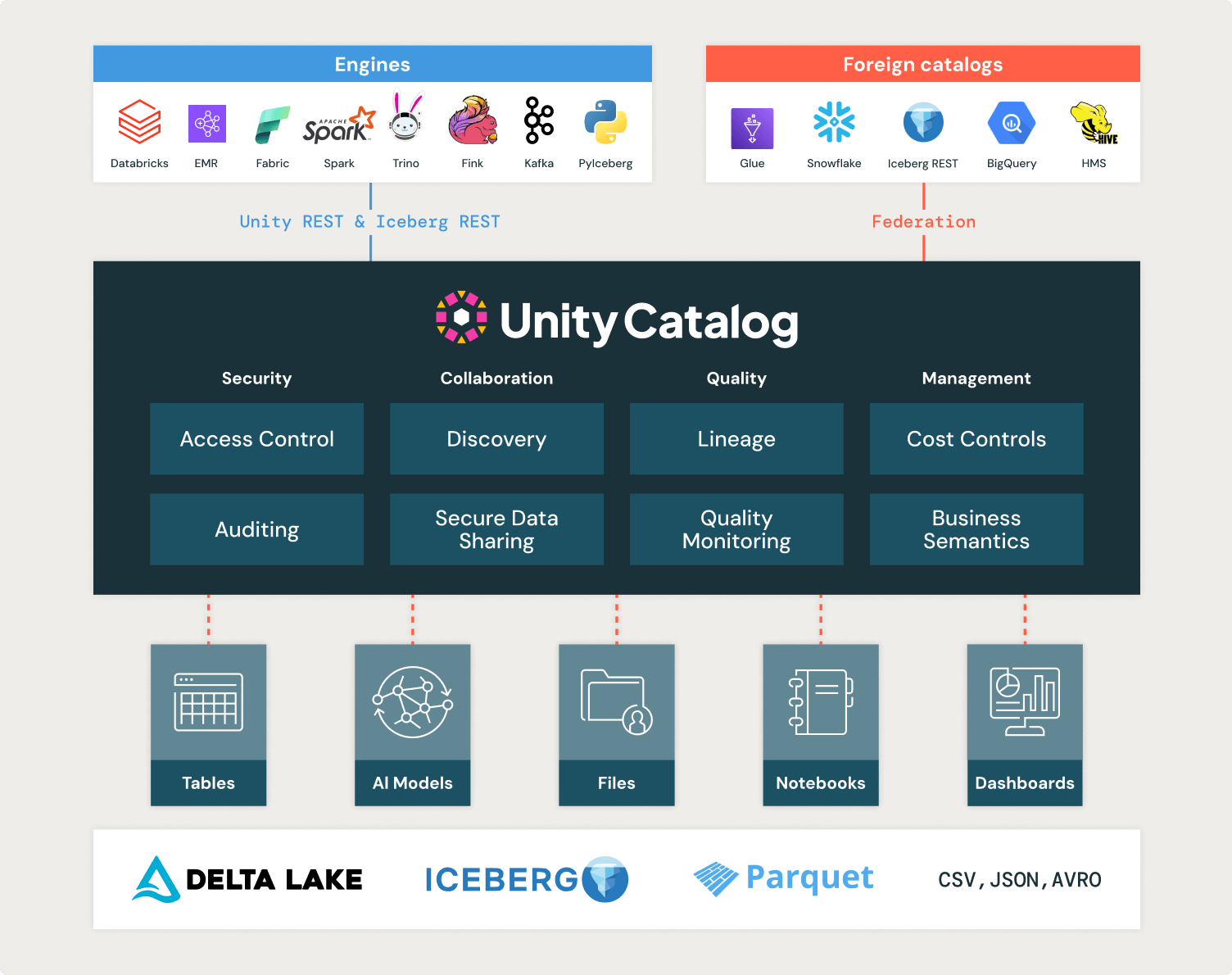What’s New with Azure Databricks: Unified Governance, Open Formats, and AI-Native Workloads
Explore the latest Azure Databricks capabilities designed to help organizations simplify governance, modernize data pipelines, and power AI-native applications on a secure, open platform.

Summary
- Empower every user with Databricks One and Genie – combining AI/BI, apps, and insights in a secure, governed workspace
- Build AI-native apps faster with Lakebase and open-format Iceberg tables – all natively supported on Azure
- Simplify governance across your data estate with Unity Catalog innovations like Attribute-Based Access Control (ABAC), external metadata access, and Power BI integration
Azure Databricks continues to evolve as the most open, governed, and intelligent data platform on Azure. At this year’s Databricks Data + AI Summit, we introduced a host of new innovations designed to help Azure customers modernize data architectures, scale secure collaboration, and accelerate AI adoption. From simplifying data ingestion and orchestration to empowering more users with governed insights, these innovations make it easier than ever to build, deploy, and scale AI across your organization. In this recap, we’ll cover key updates announced at Data + AI Summit – now available on Azure.
Empowering Business Users with Databricks One + Genie
Databricks One is a new workspace experience designed to help business users get the most out of data and AI with the least friction. It provides a simplified, intuitive interface where users can explore AI/BI Dashboards, ask questions using natural language via Genie, and access custom Databricks Apps. Users can also discover relevant dashboards, spaces, and tools through AI-powered recommendations, all within a governed environment integrated with Azure identity and security.

As part of this experience, the new “consumer access” entitlement, available to all Databricks customers today, provides business users with a simplified, read-only interface to access shared assets such as dashboards, Genie spaces, and Databricks Apps – making governed insights accessible to decision-makers.
AI/BI Genie is now generally available, empowering business users to ask data questions in natural language and receive accurate, explainable answers. Powered by Data Intelligence, Genie learns from organizational usage patterns and metadata to generate SQL, charts, and summaries grounded in trusted data. It supports follow-up questions, deep reasoning (coming soon), and semantic understanding to help users go beyond the dashboard and uncover meaningful insights. Additionally, the Azure Databricks native connector to Azure AI Foundry enables Foundry agents to retrieve governed, real-time insights from AI/BI Genie. This connector honors Unity Catalog permissions and ensures insights are grounded in your organization's trusted data.
Unified Governance and Openness: The Foundation for Interoperability
Unity Catalog is the foundation of Azure Databricks’ open, secure, and interoperable platform. Recent updates continue to expand its capabilities:
- Attribute-Based Access Control (ABAC) defines flexible access policies using tags that can be applied at the catalog, schema, or table level. ABAC is available in Beta for row and column-level security.
- Automated publish to Power BI allows governed datasets to be securely published and refreshed in Power BI, reinforcing data security and integrity across the Microsoft stack. When ABAC is used with Publish to Power BI task, ABAC ensures only authorized users can view or publish governed data, aligning workspace access with business attributes and security policies.
- Mirrored Azure Databricks Catalog is now Generally Available. This feature allows tables governed in Unity Catalog to be accessed by Microsoft Fabric, enabling interoperability via Unity Catalog Open APIs.
- Cross-cloud data governance with Unity Catalog supports accessing S3 data from Azure Databricks. This enables organizations to enforce consistent security, auditing, and data lineage across cloud boundaries.
- Data Classification, Anomaly Detection, and Audit Enhancements leverage data intelligence to automatically flag anomalies and sensitive fields in your data
- Iceberg Managed Tables bring full Apache Iceberg™ support to Unity Catalog, enabling open, governed access across multiple engines and tools.

With these enhancements, Unity Catalog stands as the most feature-rich, performant, and open catalog available today. It helps organizations standardize governance and accelerate innovation across their Azure data estate. These benefits are already being realized through Unity Catalog managed tables, which apply built-in AI optimizations to deliver up to 50%+ cost savings and 20x faster queries, all without requiring manual tuning or maintenance.
Modernize Data Warehousing and ETL with Lakeflow and Lakebridge
Lakeflow, now generally available, unifies data ingestion, transformation, and orchestration through three integrated components:
- Lakeflow Connect for reliable, managed ingestion
- Lakeflow Declarative Pipelines for building scalable data pipelines with ease
- Lakeflow Jobs for native orchestration of data and AI
Lakeflow simplifies data engineering by eliminating the need to stitch together multiple tools, reducing complexity and cost so teams can focus on driving business value. For engineering teams, the underlying technology is open-sourced as Spark Declarative Pipelines, offering transparency and flexibility for advanced users.
At the same time, Lakeflow Designer—the new AI-powered visual pipeline builder available in preview later this year—enables non-technical users to build, deploy, and monitor production-grade data pipelines through a no-code interface. This is especially valuable for Azure customers looking to modernize workflows from legacy ETL tools, making pipeline development accessible to a broader range of users while ensuring reliability and scalability.
Lakebridge accelerates the migration of legacy data warehouse workloads to Azure Databricks SQL. It simplifies assessment, conversion, validation, and reconciliation - offering up to 2x faster implementation for teams moving off Teradata, Oracle, Snowflake, and more.
Databases and Apps for AI-Native Workloads
Lakebase is the first fully managed Postgres database integrated with the lakehouse and built for intelligent applications. Lakebase allows customers to combine operational, analytical, and AI workloads from Azure Databricks, within a unified platform and without custom ETL pipelines. Common use cases include serving data and/or features from the lakehouse in applications like personalized recommendations, building applications and agents for order processing or chatbots, and analyzing operational data in the lakehouse for historical order analysis, to name a few.
Databricks Apps, now generally available, lets teams build secure, governed applications directly within the Azure Databricks environment. From internal admin tools to customer-facing applications, apps can be built in Python or JavaScript, and integrate seamlessly with Azure authentication. This can also be complemented with Microsoft Power Apps to enable flexible front-ends backed by Unity Catalog governance.
Conclusion: Azure Databricks is Your AI-Native Data Intelligence Platform
Azure Databricks is delivering the future of data and AI. With innovations in governance, openness, and AI-native workloads, we’re helping Azure customers simplify operations, boost productivity, and scale insights across their organizations.
Explore these new capabilities today and start your journey towards a Databricks Data Intelligence Platform on Azure.
Never miss a Databricks post
What's next?

Product
November 21, 2024/3 min read
